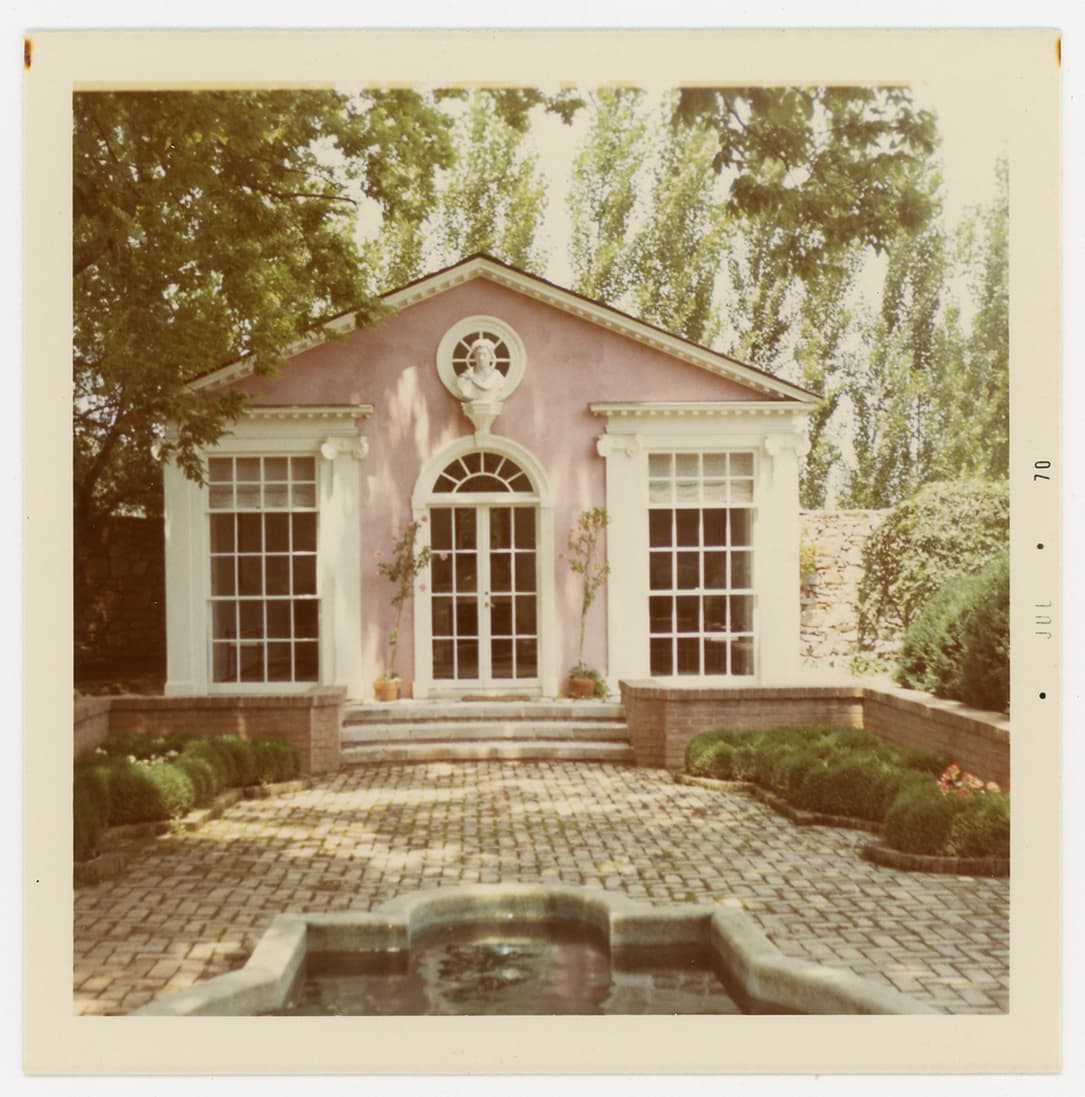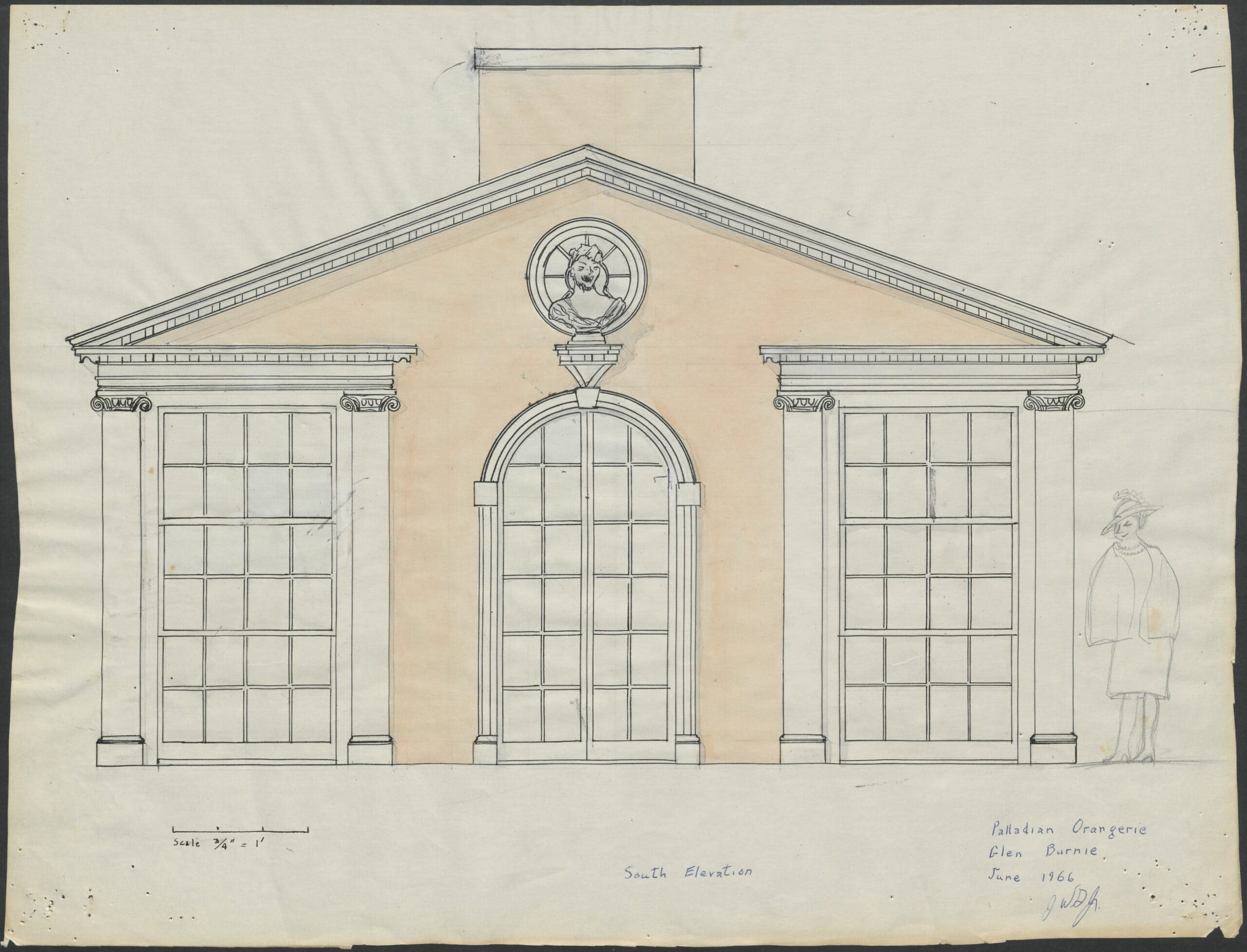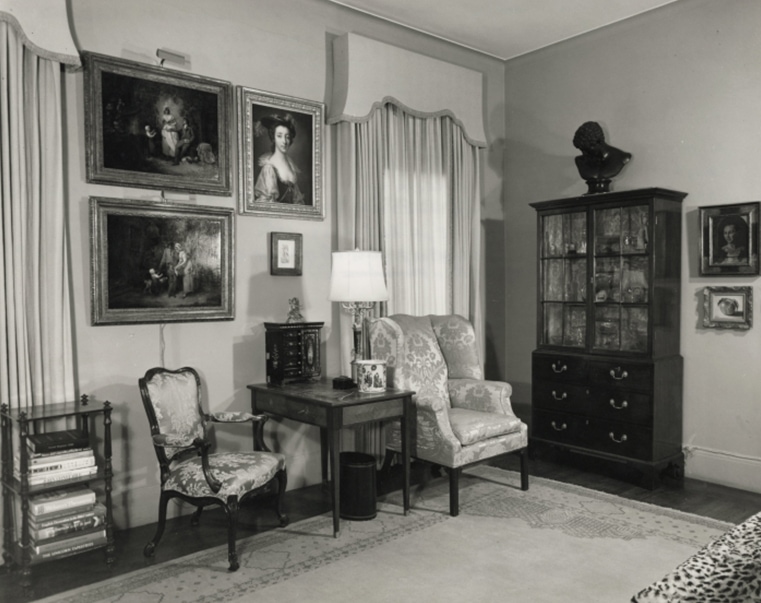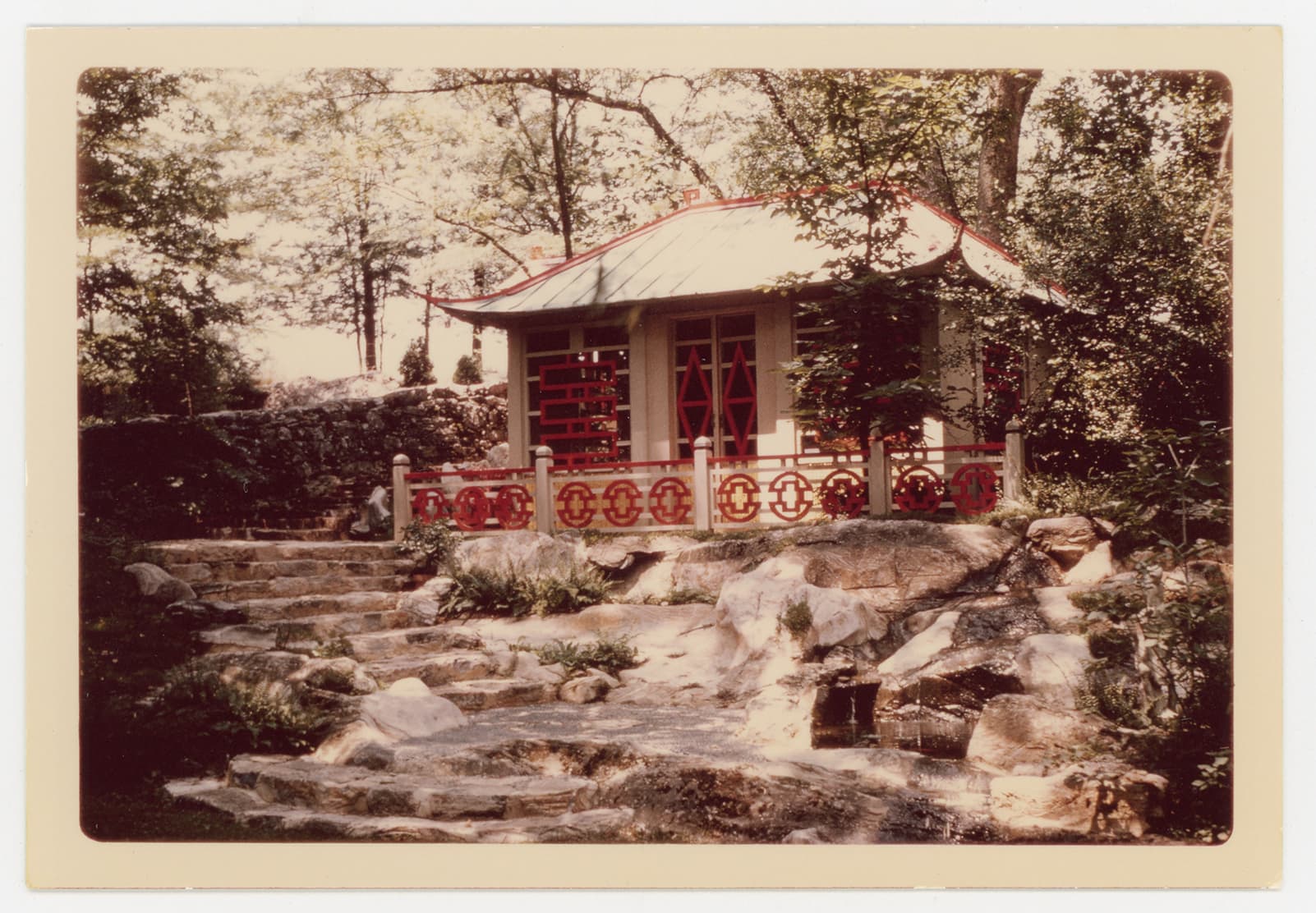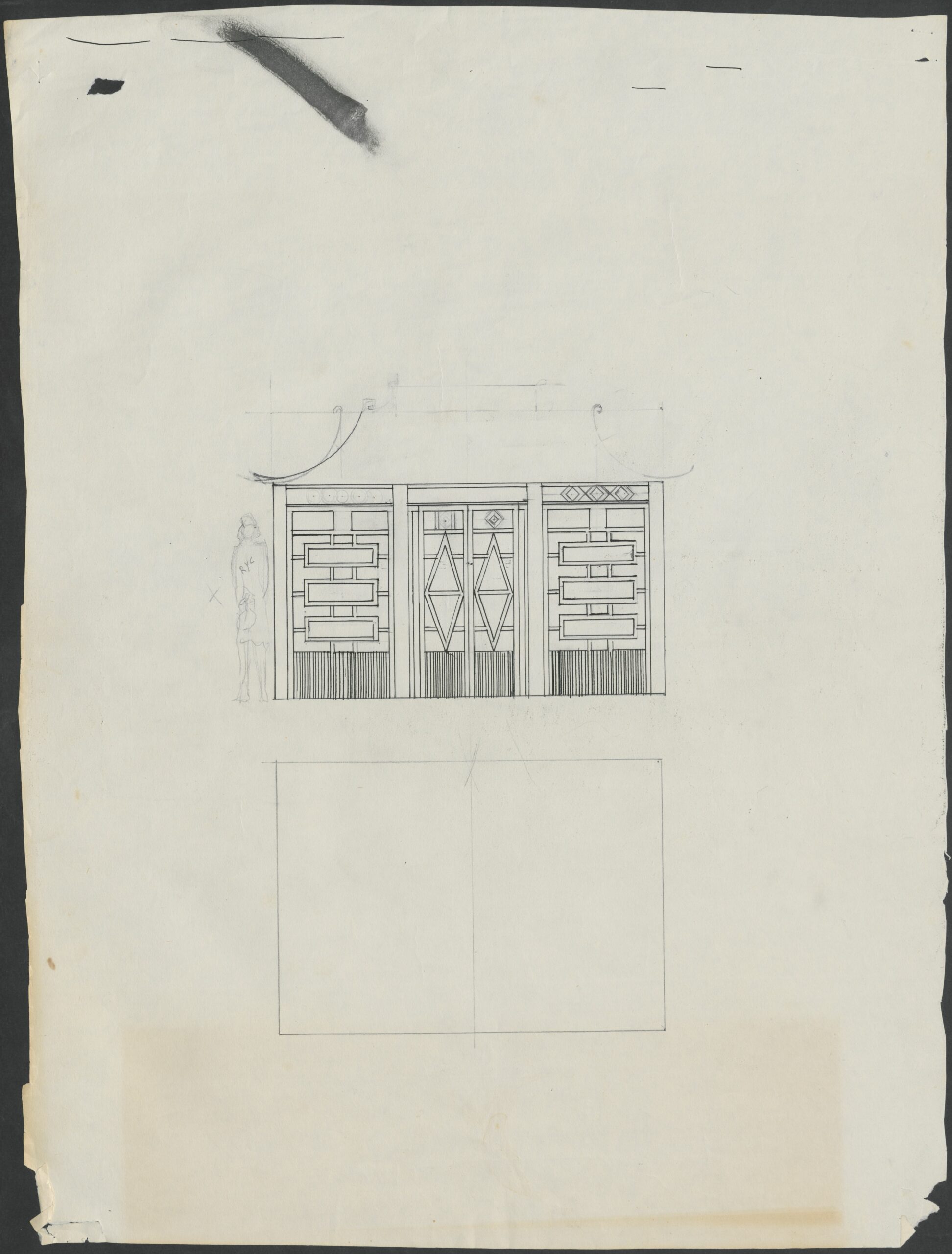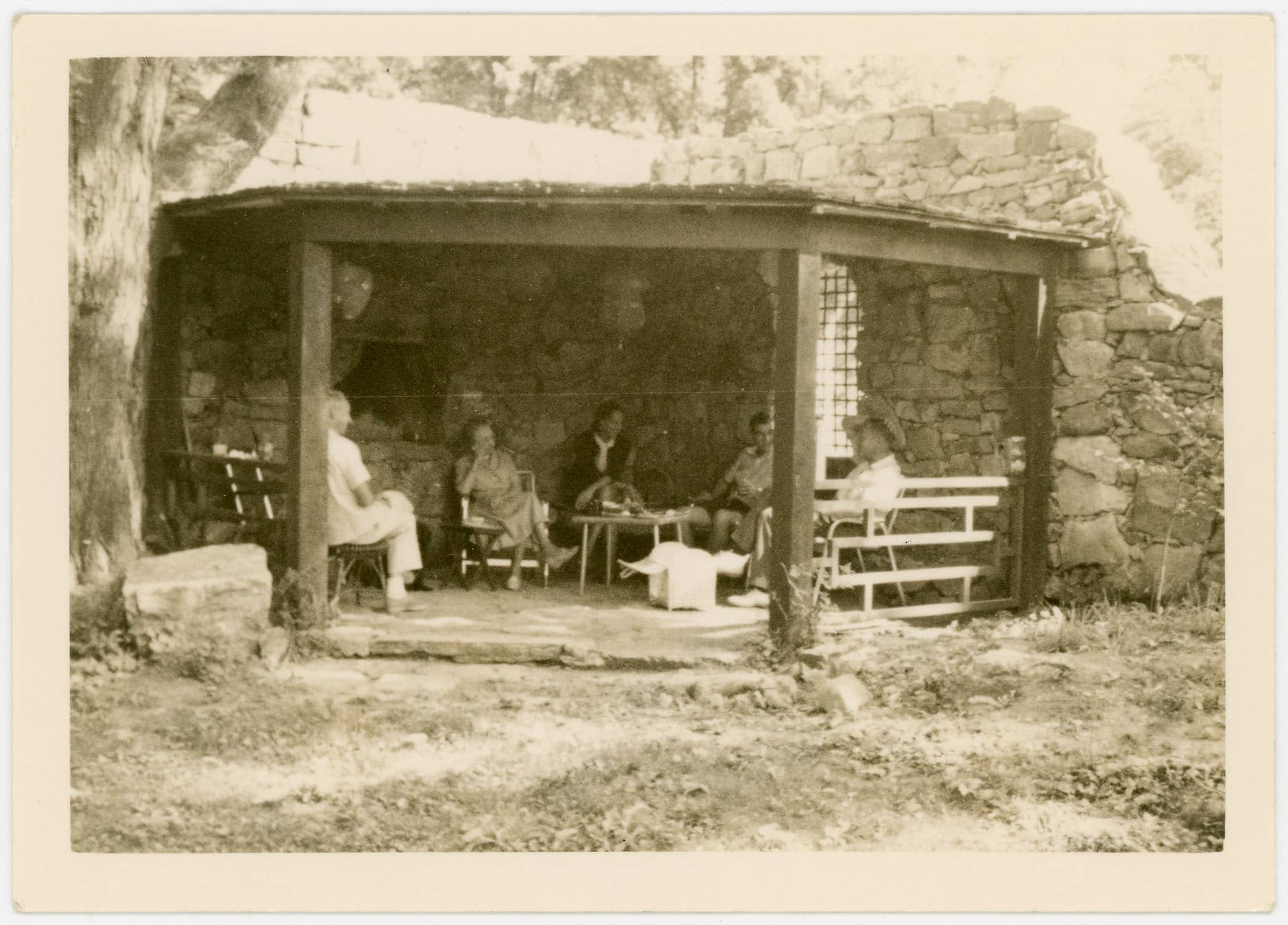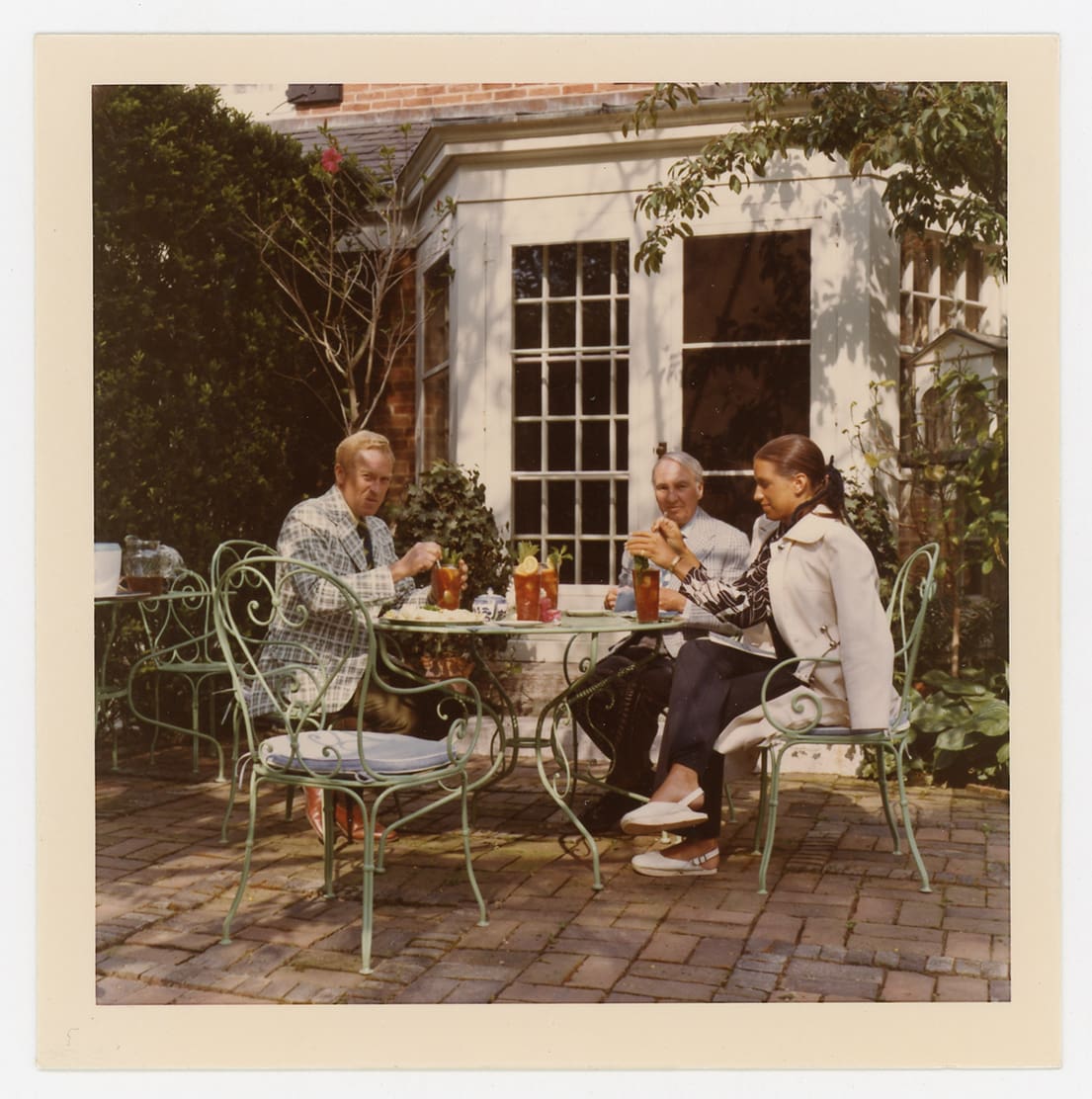In the 1950s, Julian Wood Glass Jr. (1910–1992), descendent of Winchester founder James Wood, and his partner, R. Lee Taylor (1924–2000), began a massive project to renovate the Glen Burnie House and beautify its surrounding grounds.
Glass and Taylor met in New York City in 1947 following service during WWII. The two entered a committed relationship that lasted over two decades. Glass maintained residences in New York City and Nowata, Oklahoma, visiting Glen Burnie at holidays and in the summer.
To those closest to the couple, their relationship was an open secret. But it remained a private matter in an age when homosexuals didn’t typically come “out.” Laws criminalizing homosexual behavior were a reality for the entirety of Glass and Taylor’s lives. Anti-sodomy laws remained on the books in Virginia until 2013. During the time Glass and Taylor were renovating Glen Burnie, the Lavender Scare was purging gays and lesbians from the government workforce. The U.S. Postal Service was investigating homosexual materials sent through the mail, an investigation that extended to personal correspondence.
To protect themselves and their relationship, Glass and Taylor enacted a series of precautions that permeated the Glen Burnie landscape. Use this guide to learn more.
Pink Pavilion and Courtyard
Julian Wood Glass Jr., who had studied architecture, designed the Pink Pavilion himself. Glass located it at the western edge of the grounds, near the vegetable garden and farm road leading into the property. He originally envisioned it as an orangery—a building in which to grow citrus fruit—as featured on some of the English country estates he so admired. After the structure and its courtyard were completed in 1967, the Pink Pavilion became the site of lavish parties to which Glass and Taylor invited close friends and family. One scholar has suggested that rather than “coming out,” couples like Glass and Taylor let friends and family “in” to the open secret about their relationship.
Glass’s queer identity at times guided his collecting choices. A lover of ancient Greek and Roman culture, Glass peppered sculptures of gods, goddesses, and other classical figures throughout the garden. (See the handout “Sculpture Stroll: A Self-Guided Walk in the Gardens” available at the Gate House.)
Above the door of the Pink Pavilion, Glass placed a marble bust of the Roman Emperor Hadrian (born in 76 CE/common era). Inside the Pavilion, in a similarly shaped window, sits a bust of Antinous, Hadrian’s lover. When Glass acquired the bust in New York in February 1972, he wrote to his new partner, David Denham, of the purchase: “He was the Emperor Hadrian’s boy, you remember. A beauty.” Glass continued, “He’s for the round window, Pink Pavilion, over the fireplace, but looks so handsome atop the bookcase in my bedroom here [in New York]….”
Glen Burnie House Breakfast Room Patio
At Glen Burnie, the siting of improvements to the house and gardens over time was both practical and aided in protecting the couple’s privacy. One of Glass and Taylor’s favorite spots for brunch or tea was the patio off the Glen Burnie House Breakfast Room. This addition by Glass was located on the back side of the house. Today, a young yew hedge grows on the north side of that patio. A similar but taller hedge, as well as a mimosa tree, were in that same spot by the early 1970s. While these plantings separated the Breakfast Room Patio from the house’s service entrance, they also created a barrier, hiding this private space from Amherst Street. Here, Glass and Taylor could begin their day as a couple, enjoying one another’s company.
The Tea House and Folly 14
In the early 1960s, Glass and Taylor had two small structures built in the gardens. These were the Tea House at the top of the Asian Garden, and Folly 14 in the southeast corner of the Water Garden. They used both for intimate gatherings of friends for tea or cocktails. Their relatively remote placement removed these structures from the traffic sounds on Amherst and the service areas of the garden. But their placement also ensured the couple’s privacy.
For more on this topic, visit the Glen Burnie House, and the exhibition 123—I love you: Queer Life at Glen Burnie in the Shenandoah Valley Gallery, on view through 2026.
